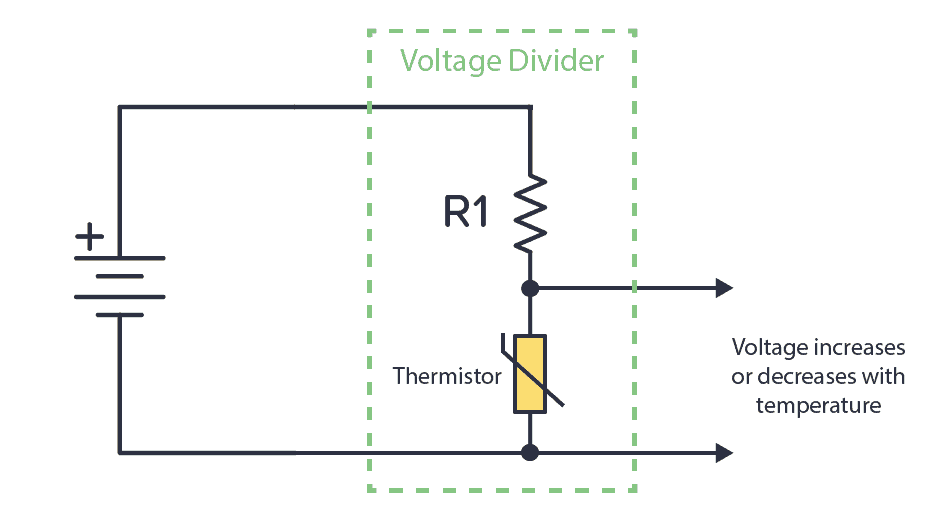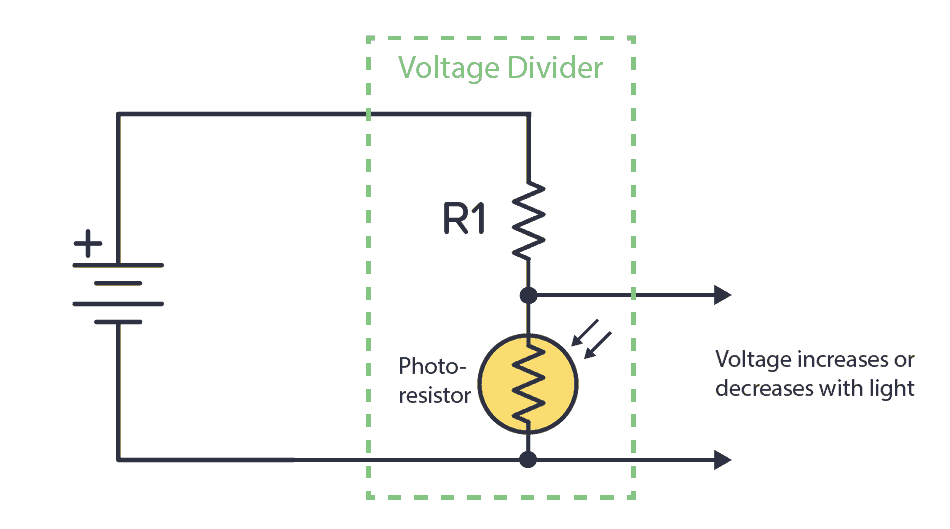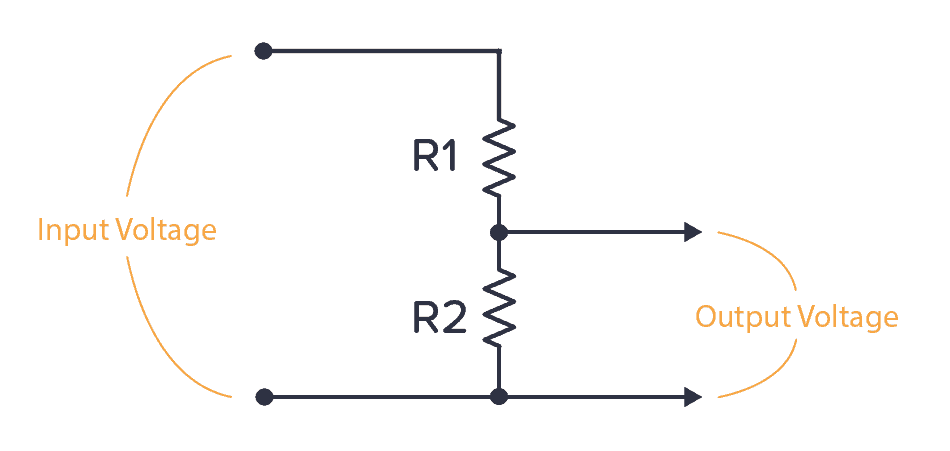A voltage divider is a circuit that divides a voltage between two resistors. You’ll see it in both simple and advanced circuits all the time.
It’s extremely useful to know!
If you know how it works, it’s much easier to see how circuits work. And it will let you calculate voltages at many different points in a circuit – which is often needed to understand it.
Voltage Divider Formula
I have to admit that I have made more use of my practical experience with building circuits than I have from the electronics theory I learned at the university. But this formula is one of the few electronics formulas I actually use on a regular basis.
It’s for finding the output voltage when you have two resistors connected like this:
The formula for calculating the output voltage is:
I recommend you memorize this formula. It will come in handy often.
Where Do You Find The Voltage Divider?
One example of the voltage divider circuit is for analog sensors. For example, the thermistor is a temperature sensor. It changes its resistance based on the temperature. If you connect it with a known resistor value in a voltage divider setup, you’ll get a voltage that depends on temperature:

Or you can combine a known resistor with a photoresistor. The photoresistor changes resistance based on the amount of light it detects. This way, you have a circuit that increases or decreases the voltage based on light.

You can connect the output of any of these circuits into a comparator to check it’s above or below a certain voltage. Then do something based on that. For example, if the temperature is above 40 degrees, turn on a fan.
Or connect into an analog pin of an Arduino or a microcontroller and do cool stuff with it. Maybe turn on a light if the photocell indicates that it’s dark?
Calculation Example: Different resistor values
Let’s say we have the following values:
By using the formula above we get
Calculation Example: Equal resistor values
Now, let’s say R1 and R2 has the same value.
By using the formula above we get
This means that when the two resistors have the same value, the output is always half the input.
Questions?
What are your questions around the voltage divider? Let me know in the comment section below.
Copyright Build Electronic Circuits

No comments:
Post a Comment